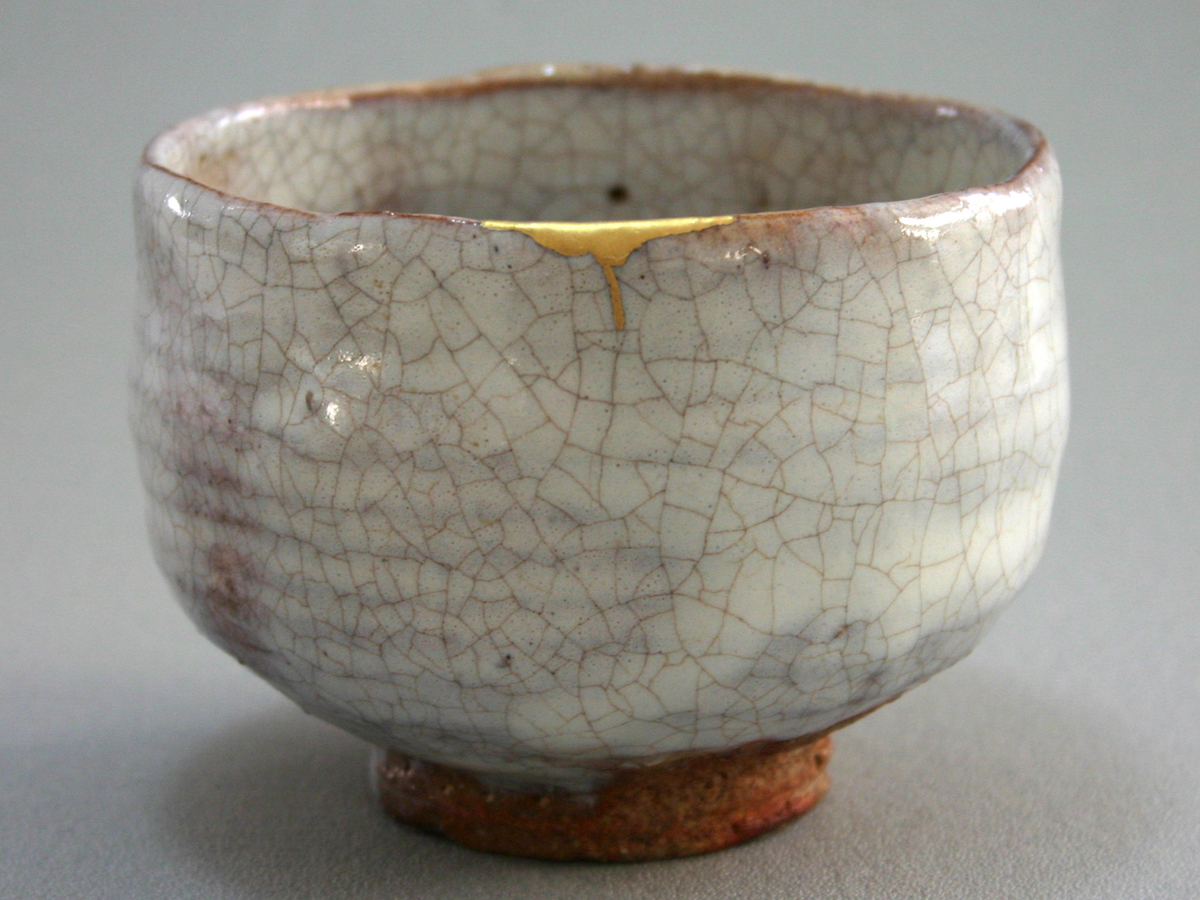raku and kintsugi
The development and spread of KINTSUGI coincides with a period of philosophical upheaval. At the end of the 15th century and the beginning of the 16th century, a change took place in the cultural tea tradition of Japan - away from pomp, towards simplicity, naturalness and recognition of reality - the philosophy of wabi sabi was spread by tea masters.
Simple tea utensils, made by local artisans, took center stage.
During this period, a new ceramic technique known as RAKU also emerged and became of particular importance for the production of utensils used in the tea ceremony. RAKU ceramics were made of clay rich in fireclay or quartz and covered with a lead glaze (traditionally in red or black). Firing was done at temperatures around 800°C to 1000°C. The ceramics were then removed from the kiln while hot using tongs. During cooling, the glaze cracks and forms a characteristic craquelure. RAKU ceramics are relatively thick-walled so that they can withstand the thermal shock during cooling without damage and have a porous body that can break easily. There may be a connection here between the development of RAKU and the emergence of the KINTSUGI technique, which was used to repair broken tea bowls.

